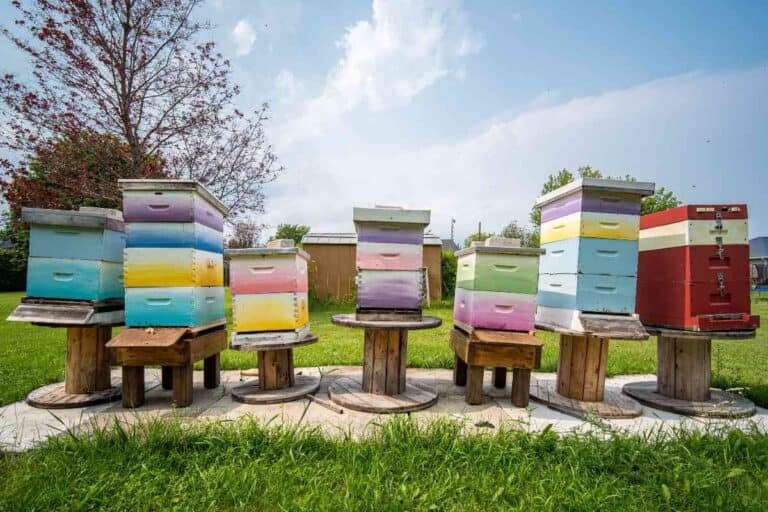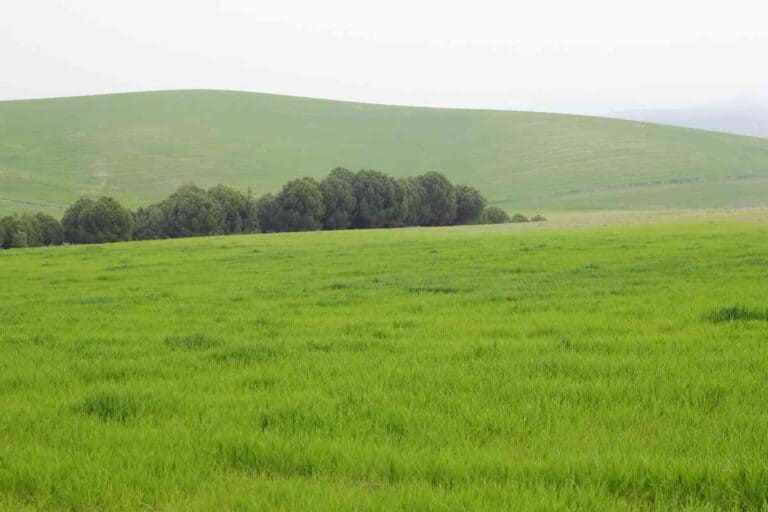How to Leave Society and Live in the Woods
Who doesn’t occasionally dream of leaving society behind and move into the woods never to be seen again, or at least not to be seen very often? Especially during times of trouble does this seem like an alluring option, and if Thoreau could do it, maybe you can too.
But how would one go about living in the woods?
Leaving society and live in the woods is possible, but to do so in a safe manner requires some planning. Decide what ‘living in the woods’ means to you, know the legality of living in the woods, and bring the necessary equipment and skills to stay alive in the wild.
While it is not possible to leave society entirely long-term without breaking at least a few laws and running out of several necessities, you can definitely keep that contact with society to a minimum and get very close to your dream.
In this article, we will go through all the aspects that you should consider in order to leave society behind and live a safe life in the woods.
Is it Wrong to Live in The Woods Separated From Society?
From a practical perspective, unless you have dependents, there is nothing wrong with living in the woods by oneself.
Living in the woods will get you closer to nature and provide you with a lot of practical experience with survival under harsh conditions. Besides, it will get you away from the hustle and bustle of modernity. Give you time to experience real boredom and to reflect on life.
But it is not an easy life. And most likely, you will want to return to civilization eventually. Whether it be after spending just a week in the woods or a couple of years. Or at least you will want a more permanent structure that will shelter you from the most unpleasant and dangerous aspects of nature.
Important Considerations before Moving Into the Woods
Before you sell all your belongings, quitting your job, and leaving society behind, it’s a good idea to consider how, why, and where you’d want to live this primitive life close to nature.
Why Do You Want to Live in the Woods?
There are many reasons why people want to escape society.
Often one has had enough of the superficiality of mainstream culture, or of politics. Others just want some peace for a while. Time to think and perhaps get some quiet sleep.
Some want to live in the woods to save money, minimize their impact on nature, while others still just can’t stand the prospect of working in a cubicle 40 hours a week for decades only to retire when they are too old to enjoy life.
These reasons are all good reasons. There are also many other ways of dealing with these issues, but living in the woods is not a bad one. You may not like it after all, but it doesn’t have to be permanent, and you surely will learn a lot.
Regardless of your reasons, consider if living in the woods really is the preferred solution. Especially if you plan to get rid of all your belongings and quit your job or sell your business for a long-term stay.
Also, consider if you really enjoy being in the wild. Some people like the romantic part of nature: the beautiful landscapes, cute little log cabins, and fresh water from a nearby stream. But 90% of the time, that is not what nature is about. Most of the time, it’s wet, cold, or blazing hot.
Unless you are an experienced camper, start by getting a tent and the equipment mentioned further down this article, and spend every weekend all alone in the wild for a couple of months. Then you will know if this is really for you.
How Long Do You Intend to Stay in the Woods?
Are you planning for a few weeks, several years, or even the rest of your life? Maybe you don’t know yet, but it’s an important consideration as it will influence your approach.
For a short-term stay, it is easier to accept a somewhat uncomfortable lifestyle. It is not a big deal to remain wet and cold for a weekend, but eventually, it will drive you mad (and probably sick as well).
Which leads us to a related question: How comfortable do you wish to be?
Are you planning to live in a tent or under a tarp, or will you need a solid roof and a fireplace to protect you against the environment and perhaps wild animals?
How about finances? For a short-term trip, you might not need to quit your job. You may even save some money by not having access to shops and not using any utilities.
Consider how long you really intend to live in the woods and what implications this will have on your plans.
Is It Legal to Live in the Woods?
Whether you can legally move into the woods depends on several factors. Such as ownership of a specific wood and the laws regarding the use of public land.
Can You Live in a Private Forest?
According to the USDA, more than 50% of the 441 million acres of woods and forest in the United States are owned by private individuals and businesses. In some countries, it is legal to hike and even camp in private woods and forests. However, in the US, it is considered trespassing to enter a private forest without prior permission.
In most states, property owners must set up a fence or have no-trespassing signs clearly posted to persecute trespassers. But even without such measures, you don’t want to set up camp on private property, as the owner will probably tell you to leave.
Of course, you can also talk to landowners and ask for permission to live in their woods. Most of them will probably not allow it, either because they prefer to keep their land for themselves or because they don’t want to bother with the liability. But a few may have no problem with you living in a section of their forest, perhaps for a small rent. This way, you can also test if this is for you before buying your own piece of land.
Can You Live in National Forests?
The Federal government owns just over 30% of woods and forests in the US through the U.S.D.A. Forest Service, Bureau of Land Management, National Park Service, U.S. Fish and Wildlife Service, and the Department of Defense. States and local governments own an additional ~10%.
Each forest has its own rules. Some places have dedicated campgrounds; others allow “dispersed camping,” I.E., camping outside of specified campgrounds. Often you must have a permit to camp on public land and potentially a reservation.
However, many forests do not require a specific permit or reservation, in which case you can camp as you like, as long as you abide by the rules.
However, you can not live indefinitely in the same spot. Each Forest has its own rules on how many days you can camp at the same place and how long you have to wait before you can return to that same spot. Usually, the limit for camping is two weeks, although, at some places, the limit is as high as 30 days.
It is absolutely possible to live in public woods and forests, provided you move around and plan your stay well. But you will not be able to build a permanent home and settle down.
To get food, you may also want to hunt and/or fish, in which case you will need a state-issued hunting or fishing license.
Another way of getting access to federal land is by staking a mining claim. This option is limited to some states but a very affordable way to rent land long-term.
Can You Live in Your Own Private Forest?
If you have a bit of money saved up and plan to live in the woods for an extended period, you may be best served by buying your own land.
Buying a forest does not have to cost a fortune unless you need a lot of space. One acre of woodland typically costs $1,000 – $2,000 plus the value of the timber, which can vary from zero to thousands of dollars.
Of course, owning land means you need to pay property taxes, but this can be limited to a few hundred dollars a year, depending on your state.
A benefit of owning land is that you can stay as long as you want, you can throw out trespassers, and you can potentially build a more permanent structure.
Unfortunately, you may still have to interact with local governments if you plan to build a cabin on your land. You may want to adhere to various local zoning regulations and building codes. Although this very much depends on where you plan to live. You may prefer to choose a location that is less restrictive on building permits.
Here is a good introduction to zoning and building codes. You may also want to take a look at freedominthe50states.org where you can rank US states based on land-use freedom.
When looking for land, make sure that you can access your property and preferably a water source. One of the most common regrets amongst homesteaders is that they bought a lot with no freshwater access.
How to Move into the Woods
After you have decided how, why and where, it’s now time to make the dream a reality.
Make the Necessary Preparations
When you have decided on your preferred forest and accommodation type, it is time to prepare for the actual move.
Prepare a slow transition. Unless you are already a very experienced survivalist or bushcrafter, you have a lot to learn
Bring the Right Equipment
You will need several tools to survive in the woods, such as a hatchet, saw tarp, clothes, a lighter, and a few survival books.
The Rule of Three
Most survivalists adhere to The rule of three, which is a way of determining which survival tasks have priority over others. The rule is as follows:
- You can survive three minutes without oxygen
- You can survive three hours in extreme heat or cold
- You can survive three days without water
- You can survive three weeks without food
Your most essential tools are all supposed to keep you alive based on The rule of three. For this most basic survival, here is a list of essential items. Note that these are the bare essentials, and the list would be much longer if you want more comfort.
- A cooking pot
- A saw
- A well-insulated sleeping bag
- A tarp or tent
- A hatchet
- A lighter (for short-term use) or a fire steel/ferro rod
- A water bottle
- 200 feet of 550 paracord (the inside strands can be used as fishing line)
- A box of fishing hooks
- A solid backpack
- A knife. You may also want to bring a whetstone, but it is possible to sharpen your knife and hatchet on rocks found in nature.
- A good book on how to survive in the wild. I highly recommend the SAS Survival Guide. This pocketbook could potentially save your life.
- Sufficient food and water to live on until you know for sure that you can provide your own. You will need about 2.8 quarts (2.7 liters) of water and 2,000-3,000 calories per day.
With all of this, you can survive for quite some time. You may, of course, also need some things that are specific to your needs. Such as medicine or female hygiene products.
All your equipment should be of high quality. Things break much faster than expected when they are in constant use, and you don’t want a tear in your backpack or break your knife in the middle of nowhere.
That does not mean you have to buy the most expensive stuff. Just make sure your equipment is made by manufacturers who care about quality and tested extensively by others before you. In the list above, you will find links to equipment that I have personally found to be durable and of high quality at reasonable prices.
Move into the woods
Now, all you need to do is bring your stuff with you into whatever wood you have decided to inhabit. I recommend that you plan your move by spring or early summer. That way, you will have time to get used to life in the woods before it gets cold and really uncomfortable.
How To Survive in the Woods
Provided you have brought the right tools, food, and water. You will be able to survive quite some time in the woods. But nothing lasts forever, and the first to go will likely be your food and water.
That is why securing food and water has top priority right after having secured protection against bad weather.
Short-Term Survival
Short-term survival is relatively easy. All you need is the equipment mentioned above plus enough food to keep you full for however long you plan to live in the woods.
First, set up your tent or tarp. This will provide you protection from the weather.
Then find firewood and light a fire. This will keep you warm and allow you to cook your meals. Make sure to always gather more wood as you go along your day. You can never have enough firewood.
Long-Rerm Survival
Eventually, you will run out of food and water, so start looking for renewable sources as soon as you have set up your tent and started a fire.
There are many ways of collecting rainwater or humidity from plants. Here is a great guide to finding water in the wild. Make sure you always have enough water, as this is essential for your body to function well.
As soon as drinkable water is secured, you should start looking for a reliable source of food. Trapping, fishing, and hunting will likely be your primary source of calories. Learn how to smoke and dry foods, as you will need it during winter or in case you get too sick to work for a while.
While living in a tent can be fun for a while, you probably would want to build at least some sort of primitive cabin before winter. A cabin will shelter you from bad weather and provide a dry shelter.
Building a cabin is not difficult, but it is backbreaking work. If at all possible, bringing along a chainsaw with all the necessary accessories (sharpener, wrench; and lots of oil, chain oil, and gasoline) will make the hard work a lot more bearable than relying on a hatchet or an ax. Here is a good guide on how to build a survival log cabin.
Stay Safe
Nature is both beautiful and brutal. While an experienced survivalist can survive for years with very little equipment, a lot can go wrong.
In my view, nature is a lot safer than cities, but we have learned how to survive in the city. We don’t walk out in front of a car, and we know to avoid dodgy-looking people. Most of the time, at least.
There are entirely different dangers in nature, and if we don’t know how to avoid them, we can easily end up in a very unpleasant situation with no help for miles.
So, make sure you know what you are doing before you take the plunge. Don’t let it keep you from realizing your dream of living in the woods, but make sure you do it in a safe matter.






